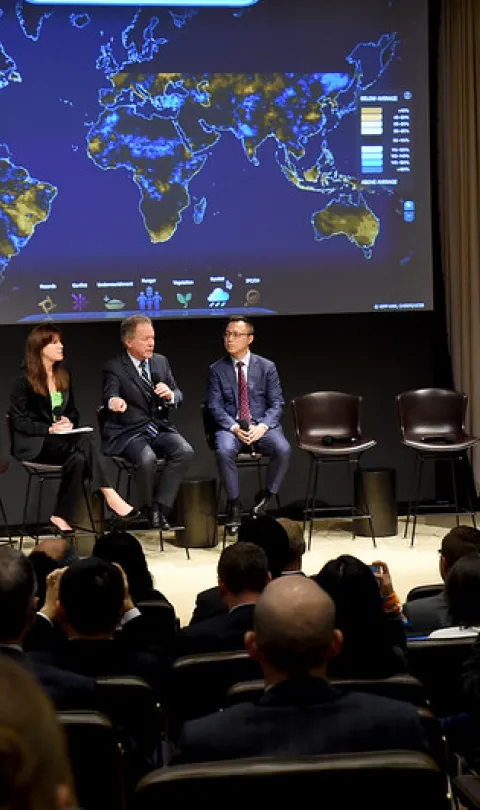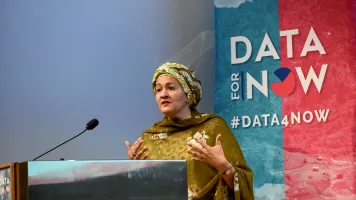"We are off track for the SDGs. Global hunger is on the rise, greenhouse gas emissions increase, and no country is on track to achieve gender equality. We must respond here and now."
Launching the Data for Now initiative last month during the UN General Assembly, UN Deputy Secretary-General Amina J. Mohammed’s call to action was clear, and heads nodded across the audience.
Among the event attendees, there was a palpable sense of hope, but also a rising tide of restlessness. With only 11 years to achieve the Sustainable Development Goals (SDGs), why was so little progress being made?
This sense of urgency was impossible to ignore, coming up again and again in events throughout General Assembly week. UN Member States announced a political declaration “Gearing up for a decade of action and delivery for sustainable development,” pledging to mobilise finance, enhance national implementation, and strengthen institutions.
It wouldn’t be possible to achieve the SDGs without such high-level political commitment. And it’s not possible to achieve the SDGs without effective action.
So what does effective action look like? This is the million-dollar question (a few million, at least). The reality is that we don’t know how to target interventions because we lack data – we don’t know what works and what doesn’t, where, and for whom. We don’t know where to start, what to focus on, or how to ensure we maximise the value of our resources.
Two realities exacerbate the issue:
- Facts are out of fashion. On a global scale, it plays out in the form of fake news, warped statistics, and polarised societies. It hinders our ability to make informed decisions and build consensus. We must make facts great again. #FactivistsUnite
- The rate of change is increasing. While an unacceptable proportion of SDG data either doesn’t exist or predates the SDGs, so much has changed since their announcement. Take yourself back four years: Russia is just beginning its involvement in the Syrian civil war; China ends the one-child policy; the British EU referendum and US presidential elections are only on the horizon. And look to the next four years: more heat records broken; increasing automation of jobs; shifting economic centres of power; 5G changing the way we work, travel, and communicate.
We need high-quality, timely data to make sure we can reach those most in need, in our rapidly changing world. And the data exists. It exists in siloed government departments, on telecommunications companies’ servers, and in the wisdom of the masses that fails to reach decision-makers. We just need the will and the coordination to make these data sources available, and put them to use in the best way possible. This is what the Data for Now initiative commits to do.
With this in mind, the first step is to answer the million-dollar question: what does effective action look like for decision-makers and citizens, and what does it look like for data providers and other stakeholders?
We want to know what the development priorities are, which data gaps are preventing progress, what the potential solutions are, and what commitments stakeholders need in order to realise action. Asking the right questions is the key to translating the momentum from the Data for Now launch event into concrete workplans and impact.
This is the foundation we’re busy laying ahead of the first Data for Now workshop in Kigali in next month.
Want to get involved? Get in touch. We’re eager to hear from policymakers, experts, data providers, funders, and everyone in between.
This is the first post in the Data for Now blog series. Read the second post here.

